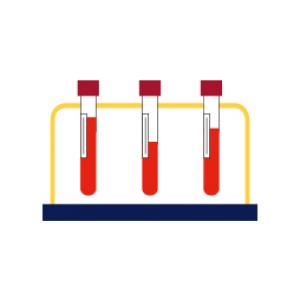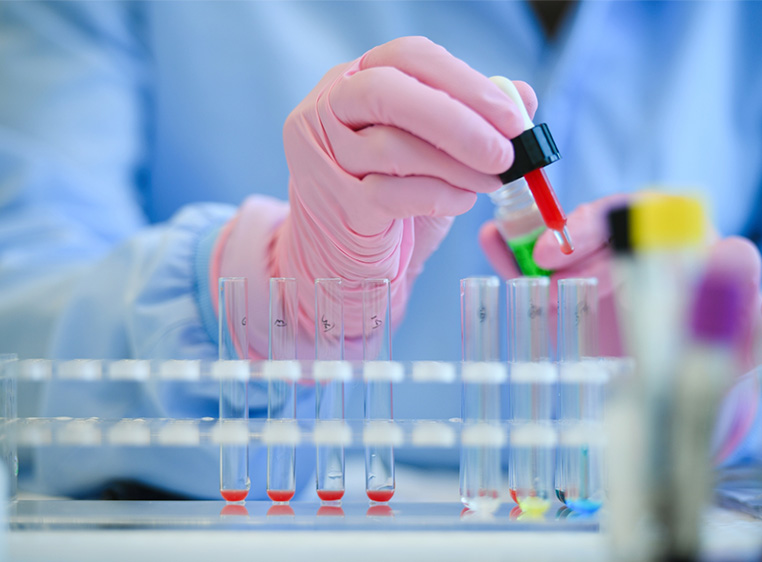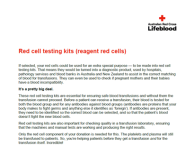Saving lives in more ways than one
If your red cells are chosen, they could be turned into a diagnostic product, called a ‘red cell testing kit’ or ‘reagent red cells’. That means hospitals, pathology services and blood banks in Australia and New Zealand can use them to help in a number of ways.
Red cell testing kits are essential for safely transfusing blood.
They help correctly match blood for transfusions by testing a patient’s blood group and checking for antibodies.

They are used to check if pregnant mothers and their babies have a blood incompatibility.

They’re also essential for checking that the machines and manual tests in a transfusion laboratory are working correctly.
It’s a pretty big deal.
Before a patient can receive a transfusion, their blood is tested to find out their blood group and to check for any antibodies against other blood groups. If antibodies are found, they need to be identified so the correct blood can be selected, and the patient’s blood doesn’t fight the new blood cells. It can come down to more than just A, B, O or AB blood types.
Antibodies are proteins that your body makes to fight germs and anything else it identifies as ‘foreign’
These kits only need the red cells in your donation.
Your platelets and plasma will still be transfused to patients. You’re helping patients before the transfusion and for the transfusion itself. Incredible!
The nitty gritty science
There are 45 blood group systems containing over 350 antigens — and those are just the ones we know about (antigens are what trigger your immune system to make antibodies).
If we’ve asked you to donate red cells for reagent red cells, that means we’ve tested your red cells for some of these antigens, coming up with something called a blood group phenotype.
Phenotyped blood is very important for both patient transfusion and as part of a red cell testing kit in pre-transfusion testing.
Transfused patients or pregnant mothers can develop antibodies to any of the antigens they don’t already have on their red cells.
This is where phenotyped blood comes in.
To identify these antibodies, red cell testing kits contain a panel of phenotyped donors who all have different combinations of antigens. The pattern of reactions to the panel of donors helps determine what the antibody is. Once the antibody is identified, then the appropriate phenotype matched blood can be transfused.
What else should you know?
We provide selected red cells to Australian-based companies that have a government-issued permit to produce red cell testing kits, which may be sent anywhere in Australia or even New Zealand (you could be an international hero!).
The odds of your blood being selected is low, but if you don’t want your red cells to be used for this extra special purpose, you can get in touch with us here.



